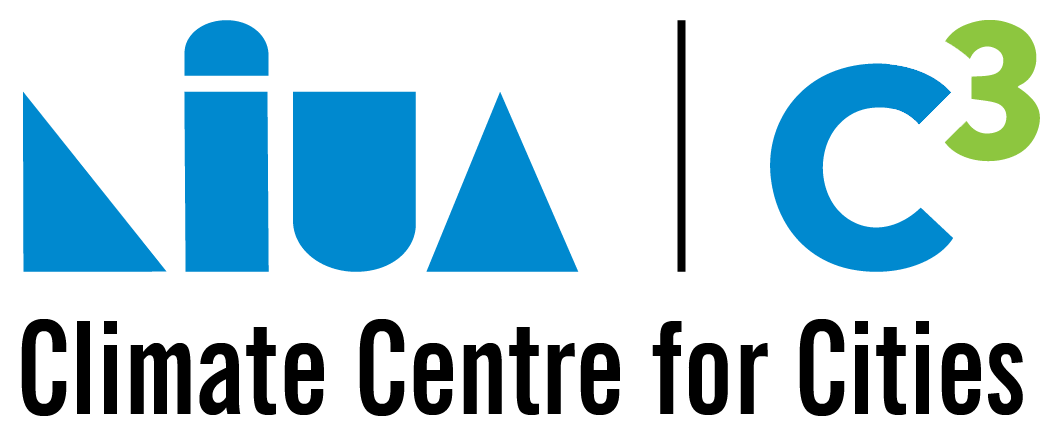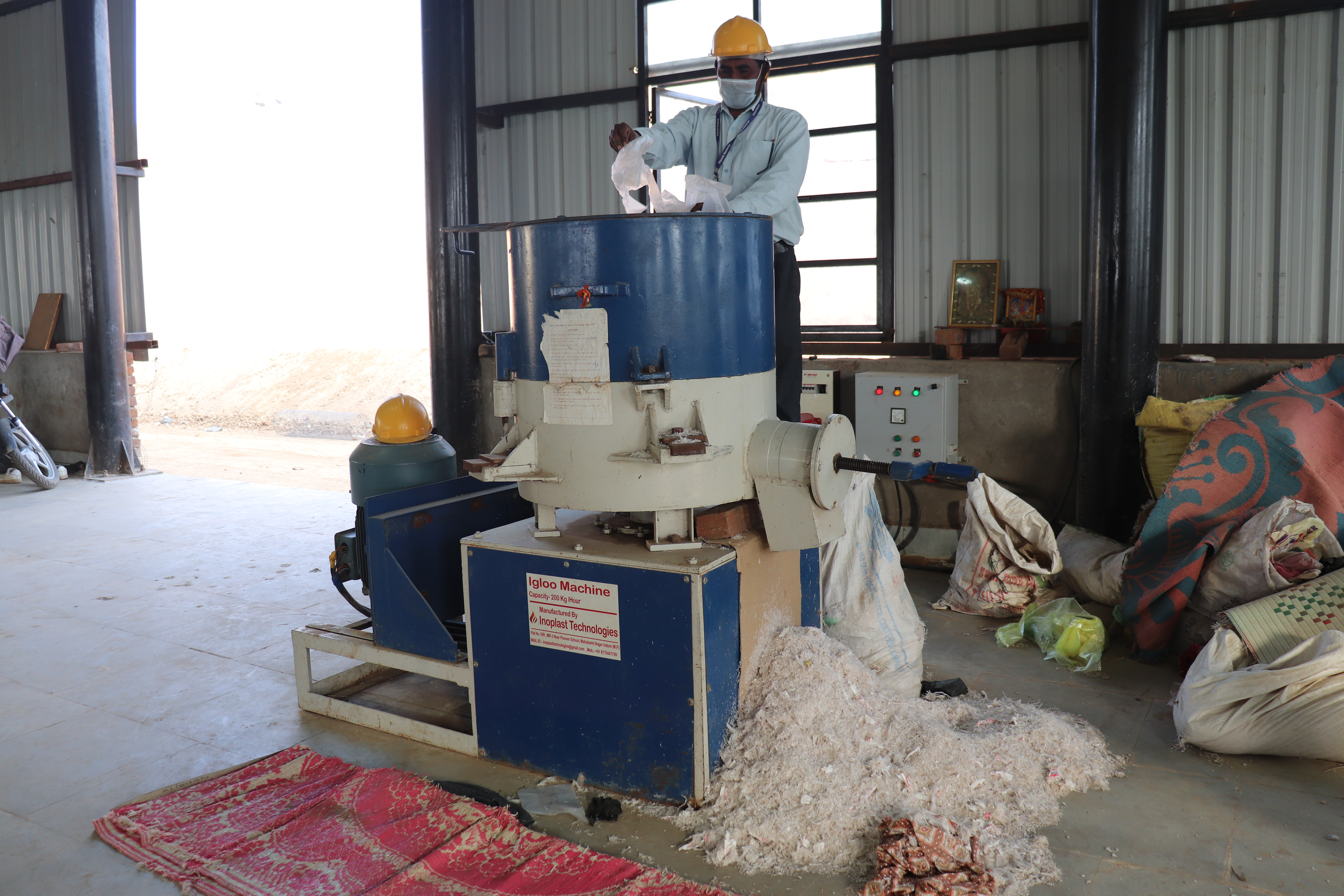Insights into Climate Change mitigation and adaptation potential across Solid Waste Management Value Chain
Published On:
Thursday, October 29, 2020
The relationship between waste management and Greenhouse Gases (GHG) emissions is well established. GHGs can be avoided by following the principles of integrated solid waste management and improving existing waste management practices. However, the climate change aspects and intangible benefits of scientific waste management are yet to be clearly spelt in the Swachh Survekshan- the world’s largest sanitation survey conducted under the Swachh Bharat Mission (urban). The Swachh Survekshan indicators being more output oriented, focus on visible improvements on ground and innovation practices. A study by TERI on quantification of the GHG mitigation potential of the various development initiatives undertaken by the Ministry of Housing & Urban Affairs, reported that with implementation of Swachh Bharat Mission, 19 million tonnes CO2 equivalent GHG mitigation will be achieved by 2031.
With launch of the ClimateSmart Cities Assessment Framework (CSCAF), an attempt is made to apply the climate lens to waste management practices and measure outcomes based on improved Solid Waste Management (SWM) practices established by the cities. Under the CSCAF, the SWM category is allocated 15% weightage in the framework and its indicators are aligned to that of Swachh Survekshan. The climate change mitigation and adaptation related 13 Swachh Survekshan indicators were identified and clubbed as CSCAF indicators across the solid waste value chain to generate a climate relevant score.
In this blog, an effort has been made to summarise the opportunities for climate change adaptation and mitigation actions across the SWM value change. To start with generation aspects, it would be pertinent to state that an increase in waste generation with urbanisation is a well-accepted phenomenon. With increasing economic-ability and liveability, this increase is expected to be more in urban areas as compared to rural areas. Therefore, it is important that cities prioritise certain actions for waste reduction and accordingly plan their future waste management operations and infrastructure requirements. As the feasibility of waste reduction is in the entire life cycle of any product, hence, municipal and citizen centric approaches adopted for waste “reduction” at source, matter the most. Municipal authorities are encouraged to evolve, adopt and implement waste reduction actions like carry your own bag, utensil banks, repair shops, buy back systems, with support of citizen groups, market associations, etc. These actions may be aligned to the National policies and programmes.
‘Reuse and Recycle’ are the next level of waste management hierarchy after ‘Reduction’ and are cumulatively known as the 3R’s. Waste recovery and recycling systems are yet to be 100% formalised in all cities and the informal sector plays an important role in resource recovery and its recycling operations. Recycling and reuse practices lead to less pressure on natural resources and mitigate associated GHG emissions. Material Recovery Facilities (MRF) and facilities for producing Refused Derived Fuel/Segregated Combustible Fractions help by promoting resource recovery and resource efficiency in cities and address the city’s GHGs mitigation requirements. ‘Reuse’ is always preferred over recycling, as it has the maximum potential to save virgin material, and hence is important from GHG avoidance point of view.
The GHG emissions can be further avoided by ‘processing, treatment and disposal’ facilities which are scientifically operated and managed as per the Solid Waste Management Rules, 2016. Effects of heat waves resulting in dumpsite fires can also be effectively prevented by scientifically operating landfills. There are certain parameters and conditions as guidance for implementation of the SWM rules, provided through the Municipal Solid Waste Management Manual, 2016 as well as through stipulated conditions by Central and State Pollution Control Boards (PCBs). Environmental Clearance for processing, treatment and disposal facilities is provided by the State Environmental Impact Assessment Authority (SEIAA) or as applicable for the state. The scientific closure and post closure maintenance of engineered landfills and dumpsites avoid significant GHG emissions. Bio-mining of dumped waste and/or making windrows over dumpsites however does not mitigate any GHG emissions. There are well established methods published by Intergovernmental Panel on Climate Change (IPCC) and other organisations like WRI, ICLEI, C40 to quantify the GHG emission from processing, treatment & disposal facilities.
Adaptation potential in the SWM value chain is somehow understated as compared to mitigation. The ill-effects of excessive rainfall and cyclones on landfills cannot be overstated, common effects being leachate overflow, water contamination and landfill slides. Even old landfills situated on floodplains can be an issue of grave concern. Such facilities need hydraulic protection from any such unforeseen calamities. Similarly, waste collection equipment and transportation fleet must be examined for their resilience under the changing climatic conditions of an area. Adaptation measures need to be practiced locally and the results are more or less immediate as compared to mitigation wherein the results are long term. A road map to assess the adaptive capacity of urban waste management systems and to frame them within the overall city adaptation/ disaster management strategy is required. IEC and awareness generation activities for implementing 3Rs effectively is need of the hour. A capacity building programme focusing on adaptation and mitigation aspects is must for municipal functionaries.
Besides aforementioned elements of the SWM value chain, Greenhouse Gases mitigation aspects due to Construction and Demolition Waste Management, its recycling and utilisation is yet to be explored by many cities. The C&D waste utilisation reduces the pressure on the exploitation of natural resources. Cities need to focus on finding greener ways to replace concrete, encouraging the reuse of recycled materials to replace virgin materials. C&D Waste Management Rules and BIS Standard IS 383 encourages 100% utilisation of Recycled Aggregates (RA) and Recycled Concrete Aggregates (RCA) and this can be achieved through effective State/city level policies and practices.
The waste sector has one of the highest and most visible potentials for reduction of GHG emissions in a city as each unit of methane is 23-time global warming potential that of CO2 equivalent. Considering this, it is a win-win situation for any city whereby a city, by merely following good practices of waste management – can look visibly clean, have a healthy environmental and an improved quality of life for its citizens. Thus, leading to long term climate benefits for the city and the region and also contributing towards the fulfilment of India’s Nationally Determined Contribution (NDC) goals.
Contact Us
1st and 2nd Floor, National Institute of Urban Affairs
India Habitat Centre Lodhi Road New Delhi-110003
Please Call Help Desk at 011-411-86699
Monday - Friday, 9:00 AM - 5:00 PM
Please write to us at c-cube@niua.org








Post a Comment